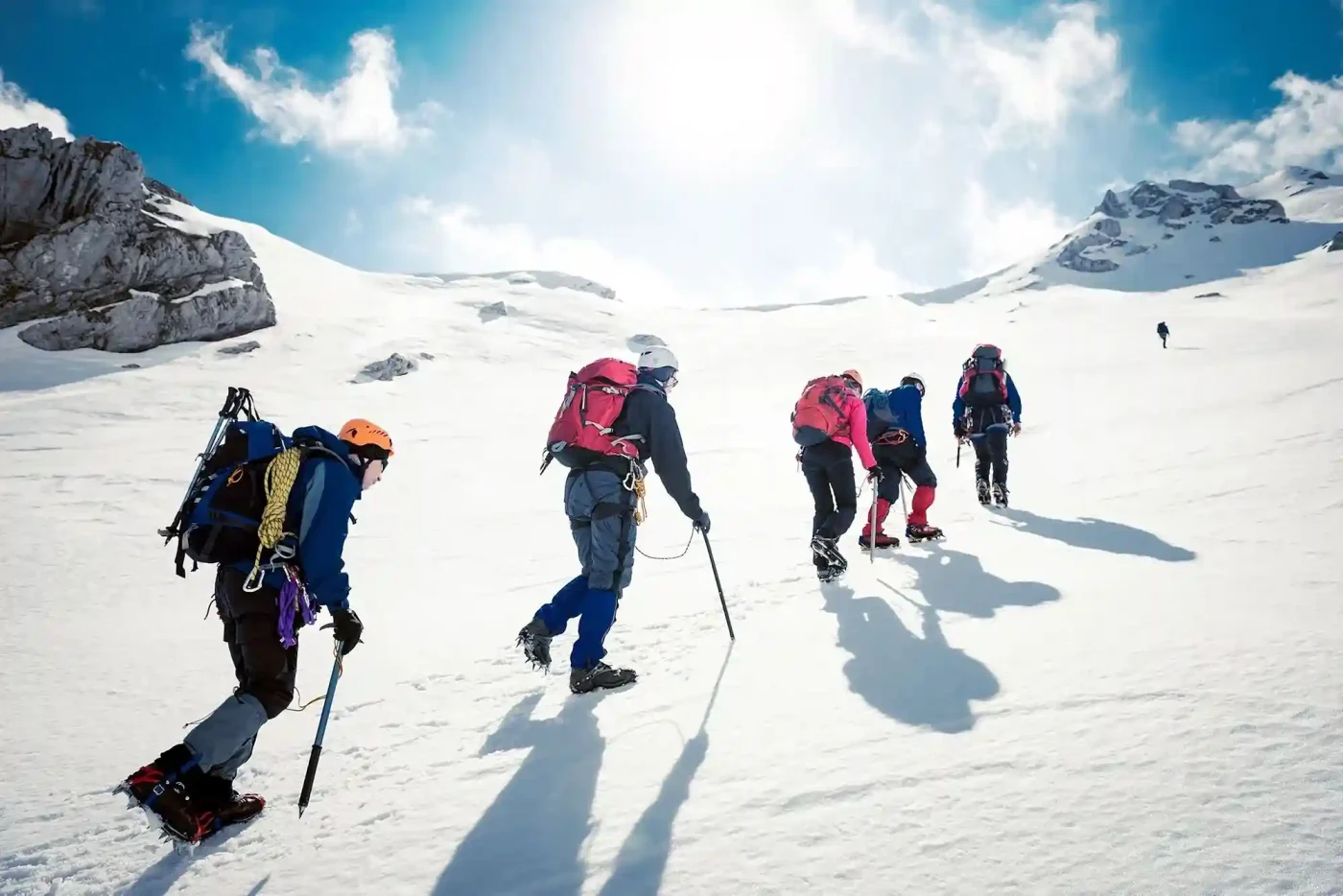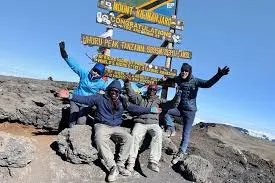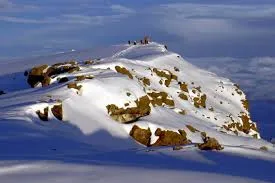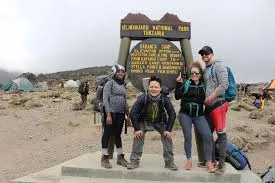Comparing Kilimanjaro Safety to Other Famous Mountains
When preparing to climb Kilimanjaro, it’s important to understand the safety considerations compared to other famous mountains. While Kilimanjaro is non-technical, altitude sickness is the main risk, so proper acclimatization, gradual pacing, and hydration are crucial. Weather can change rapidly, so bring appropriate clothing layers and gear to stay warm and dry. Unlike technical climbs such as Everest or Mont Blanc, Kilimanjaro does not require ropes or specialized mountaineering skills, but following a guided route with experienced guides greatly reduces risks. Below is a comprehensive overview of Kilimanjaro’s safety compared to other famous mountains, designed to help you climb confidently and securely with Capable Africa Tours.
Plan Your Safe Kilimanjaro Climb
Why Safety Matters When Climbing Kilimanjaro
At 5,895 meters, Kilimanjaro is one of the world’s highest non-technical peaks, making it accessible yet challenging due to altitude and weather. Compared to Everest (8,848 m), Mont Blanc (4,810 m), and Denali (6,190 m), Kilimanjaro offers a unique safety profile. With Capable Africa Tours, safety is paramount, with measures like daily health checks, oxygen tanks, and experienced guides ensuring a secure climb. Below, we compare Kilimanjaro’s safety factors with other famous mountains to help you choose the right adventure.
Key Safety Factors Across Mountains
- Altitude Risks: Kilimanjaro’s altitude poses acute mountain sickness (AMS) risks, but less severe than Everest or Denali due to its lower elevation.
- Technical Difficulty: Kilimanjaro requires no ropes or ice axes, unlike Mont Blanc or Denali, making it safer for non-technical climbers.
- Weather Conditions: Kilimanjaro’s stable dry seasons contrast with Denali’s extreme storms and Everest’s unpredictable weather.
- Duration and Exposure: Kilimanjaro’s 7–8-day treks are shorter than Everest’s 6–8 weeks or Denali’s 2–3 weeks, reducing exposure risks.
- Guided Support: Capable Africa Tours provides 1 guide per 2 trekkers, daily health monitoring, and emergency evacuation plans.
Safety Comparison: Kilimanjaro vs. Other Mountains
Each mountain presents unique challenges. Below, we compare Kilimanjaro’s safety with Everest, Mont Blanc, and Denali, focusing on quantitative data, risks, and safety measures to provide a clear picture.
Safety Comparison
| Mountain | Altitude (m) | Duration | Death Rate (%) | Technical Difficulty | Main Risks |
|---|---|---|---|---|---|
| Kilimanjaro | 5,895 | 7–8 days | 0.01–0.03% | Non-technical | AMS, slips, weather |
| Everest | 8,848 | 6–8 weeks | 1–2% | High (ropes, ice) | AMS, avalanches, falls |
| Mont Blanc | 4,810 | 2–3 days | 0.1–0.3% | Moderate (ropes, crampons) | Rockfall, crevasses |
| Denali | 6,190 | 2–3 weeks | 0.5–1% | High (ropes, sleds) | Storms, frostbite, falls |
- Kilimanjaro: Non-technical trails like Lemosho and Machame make it beginner-friendly. Capable Africa Tours’ 8-day itineraries improve acclimatization, reducing AMS risk to 10–20% with proper pacing.
- Everest: High altitude and technical sections (e.g., Khumbu Icefall) increase risks. Death rates are higher due to prolonged exposure and avalanches.
- Mont Blanc: Shorter duration but technical climbing (ropes, crampons) raises risks of falls and rockfall, especially on crowded routes.
- Denali: Extreme weather and isolation make it riskier. Climbers face frostbite and storms, requiring advanced skills.
Watch Kilimanjaro Safety in Action
See how Capable Africa Tours ensures a safe Kilimanjaro climb with expert guides, health monitoring, and emergency protocols in this video showcasing our safety-first approach.
How Capable Africa Tours Ensures Kilimanjaro Safety
At Capable Africa Tours, we go beyond standard safety protocols to make your Kilimanjaro climb secure and enjoyable. Our experienced team, rigorous health checks, and emergency preparedness set us apart. Here’s how we keep you safe:
Safety Measures
- Expert Guides: Certified guides (1 per 2 trekkers) trained in wilderness first aid and altitude sickness management.
- Daily Health Checks: Pulse oximeter and symptom checks twice daily to monitor oxygen levels and AMS signs.
- Emergency Equipment: Oxygen tanks, first aid kits, and portable hyperbaric chambers available on all treks.
- Evacuation Plans: Coordination with Kilimanjaro National Park rangers and helicopter services for rapid evacuation.
- Weather Monitoring: Real-time weather updates to avoid storms and ensure safe summit timing.
- Gradual Routes: Itineraries like Lemosho (8 days) designed for optimal acclimatization, reducing AMS risk.
Preparation Tips for a Safe Kilimanjaro Climb
Proper preparation is key to minimizing risks on Kilimanjaro. Capable Africa Tours provides personalized training plans and gear advice to ensure you’re ready for the challenge. Follow these tips to stay safe:
Training and Fitness
- Cardio Endurance: Run, cycle, or swim 4–5 times weekly for 45–60 minutes to build stamina.
- Strength Training: Focus on squats, lunges, and core exercises to handle steep trails.
- Practice Hikes: Train with a 5–7 kg daypack on hilly terrain to simulate trek conditions.
- Altitude Exposure: If possible, hike above 2,500 m or use altitude simulation gear to prepare for thin air.
Gear Essentials
- Layering System: Moisture-wicking base layers, fleece mid-layers, and Gore-Tex outer layers for weather protection.
- Footwear: Waterproof, broken-in hiking boots and merino wool socks to prevent blisters.
- Safety Gear: Trekking poles, headlamp, UV400 sunglasses, and SPF 50+ sunscreen.
- Rentals: Capable Africa Tours offers sanitized sleeping bags, down jackets, and poles to lighten your load.
Risk Mitigation Strategies for Kilimanjaro
While Kilimanjaro is safer than many high-altitude peaks, risks like AMS, slips, and weather changes require proactive measures. Capable Africa Tours employs the following strategies to keep you safe:
Risk Management Techniques
- Slow Ascent: “Pole pole” (slowly) pacing reduces AMS risk by allowing gradual acclimatization.
- Hydration: Guides ensure 3–4 liters of water daily to combat altitude dehydration.
- Trail Maintenance: Kilimanjaro’s well-maintained trails reduce slip risks compared to Denali’s rugged paths.
- Group Monitoring: Small groups (8–12 trekkers) allow personalized attention and early issue detection.
- Pre-Trek Briefings: Detailed safety briefings cover AMS symptoms, gear use, and emergency protocols.
Climb Kilimanjaro Safely with Capable Africa Tours
Ready to conquer Kilimanjaro with confidence? Capable Africa Tours offers safe, guided treks with a 90% summit success rate, expert guides, and comprehensive safety measures. Book now for a secure, unforgettable adventure!
- 90% summit success rate with 8-day itineraries
- Daily health checks and emergency equipment
- Certified guides trained in wilderness first aid
- Eco-friendly treks supporting local communities
- Gear rentals and personalized training plans
Limited spots for safe Kilimanjaro treks — book today to secure your adventure!
Plan Your Trek Now


